“I don’t think I’m getting my damage deposit back on the rental.”
I utter this sentence looking up fifteen feet to a concrete overpass, in the middle of a stoney field. With the main road closed, I find myself redirected by my GPS to a gravel path that gets progressively more narrow and rocky until it abruptly ends. I spot some tire tracks going up a steep incline, proving I am not the first person in this predicament, although clearly the last one had four-wheel drive. I opt to perform a rather clumsy three-point turn, slowly making my way past a group of dust-covered workers, confused as to what this yabancı with Istanbul plates is doing in the middle of a field in rural Thrace.
The answer, like to many other questions, is wine.
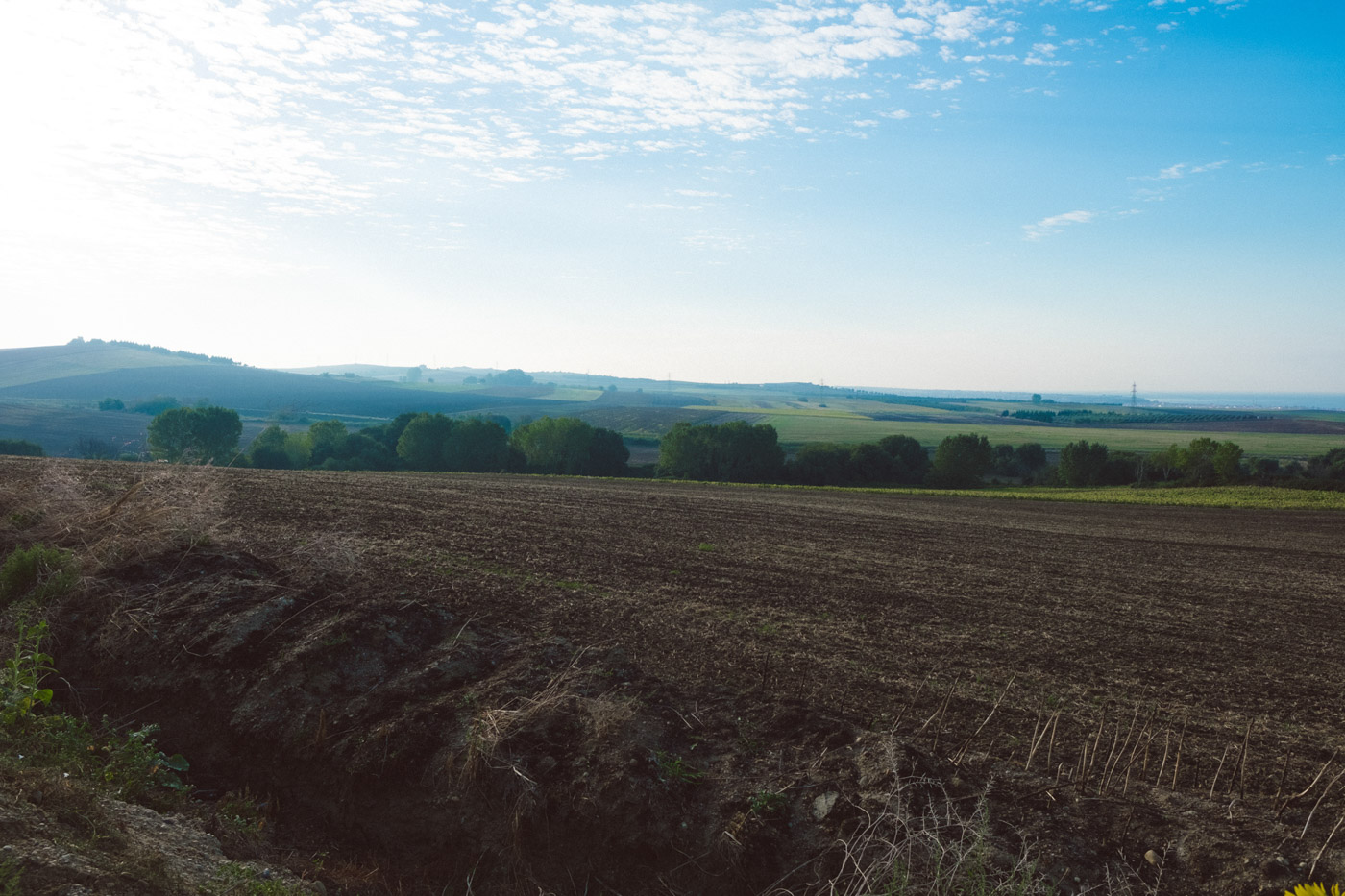
The Turkish Wine Route
Thrace, or Trakya in Turkish, is the small section of Turkey situated on the southeastern corner of the European continent—the last remnant of an empire that once included the Balkans, Greece, and large portions of Hungary and Austria. Although Thrace only represents three percent of Turkey’s landmass, it’s home to eleven million people, or fifteen percent of the population, largely concentrated in the European half of Istanbul. The region is also where a nascent group of winemakers are working to put Turkish wine on the map—in the literal sense—with what is dubbed the Thrace Wine Route.
As the world’s sixth largest producer of grapes by volume, Turkey has many wine producing regions. But the vineyards in Thrace are some of the oldest.
“It’s a viticultural area. It’s been there for hundreds of years,” says Seyit Karagözoğlu, founder of Paşaeli Wines. “People who live in that area know what to do. They know how to work with grapes.”
I meet with Karagözoğlu in Paşaeli’s Istanbul office before setting off on the route (Although Paşaeli has vineyards throughout Thrace, they’re not an official stop on the route). He is tall with dark hair, and wears a white Ralph Lauren button-up with the sleeves cuffed, a casual touch that perhaps betrays his Southern California education at Pepperdine University. Karagözoğlu first started working with vineyards in Turkey’s Aegean region, but the quality of the vines and the depth of indigenous varietals attracted him to Thrace.
“We are blessed with many indigenous varieties. We need to focus on the local grapes,” says Karagözoğlu.
Seyma Baş, a Turkish wine consultant based in Switzerland, agrees. “Local varietals always create curiosity,” she says. “The local varieties of Turkey have the potential to create wines with outstanding quality, and I really get excited seeing some examples on the international market.”
One such grape is the Kolorko variety, which Paşaeli has worked to bring back from the brink of extinction. The white-skinned grape in Karagözoğlu’s hands has a saline minerality that gives way to a burst of tropical fruit. We taste the wine in Riedel riesling glasses, which Karagözoğlu believes accentuate the varietal characteristics.
Karagözoğlu first encountered the variety in 2001 at a now defunct winery in Thrace. “You could not even find one thousand kilos in those days,” he remembers. Recognizing the danger of extinction, Karagözoğlu decided to do something about it. “Karagözoğlu began collecting clippings from his neighbors to graft onto his vines. It’s a slow, time-consuming process that took years before it was viable. The 2017 vintage was a mere 277 bottles—a practically microscopic yield, even by boutique wine standards.
All of Paşaeli’s white wines feature an endangered or threatened animal on the label. In the case of Kolorko, it’s an photo of a porpoise, which Seyit snapped himself while sailing in the Marmara Sea, not far from the Hoşköy vineyard where the Kolorko grape has been resurrected.
“We try to be original,” says Karagözoğlu. “The grapes are Turkish and we try to adapt to the grapes.” In the case of their Karasakız, they allow for a wild fermentation, using only native yeasts. “That’s very Turkish,” he says of the practice.
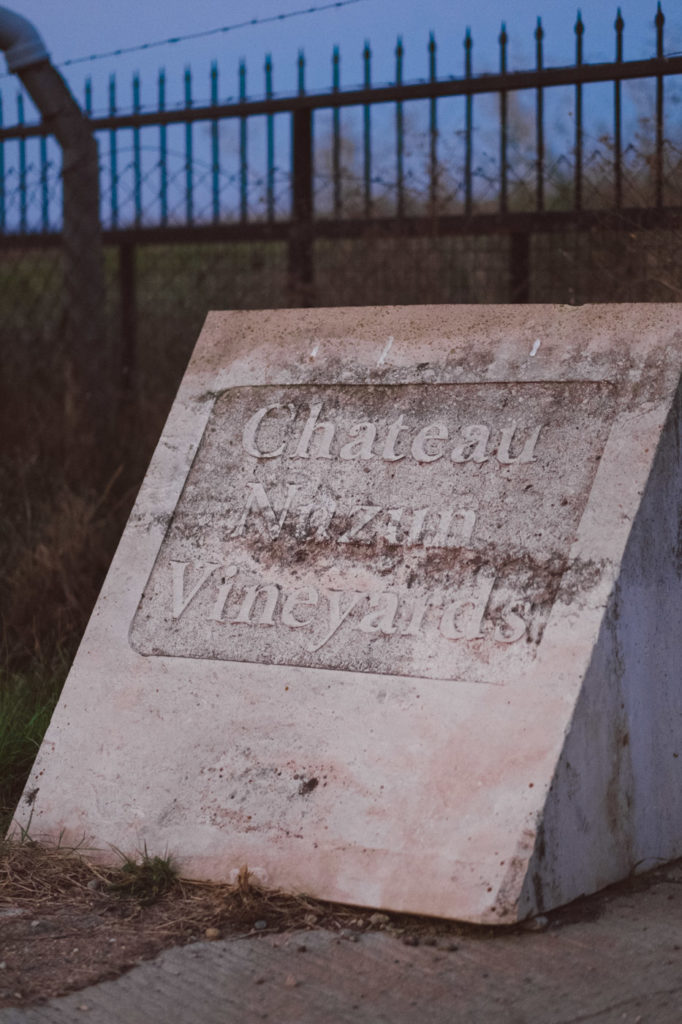
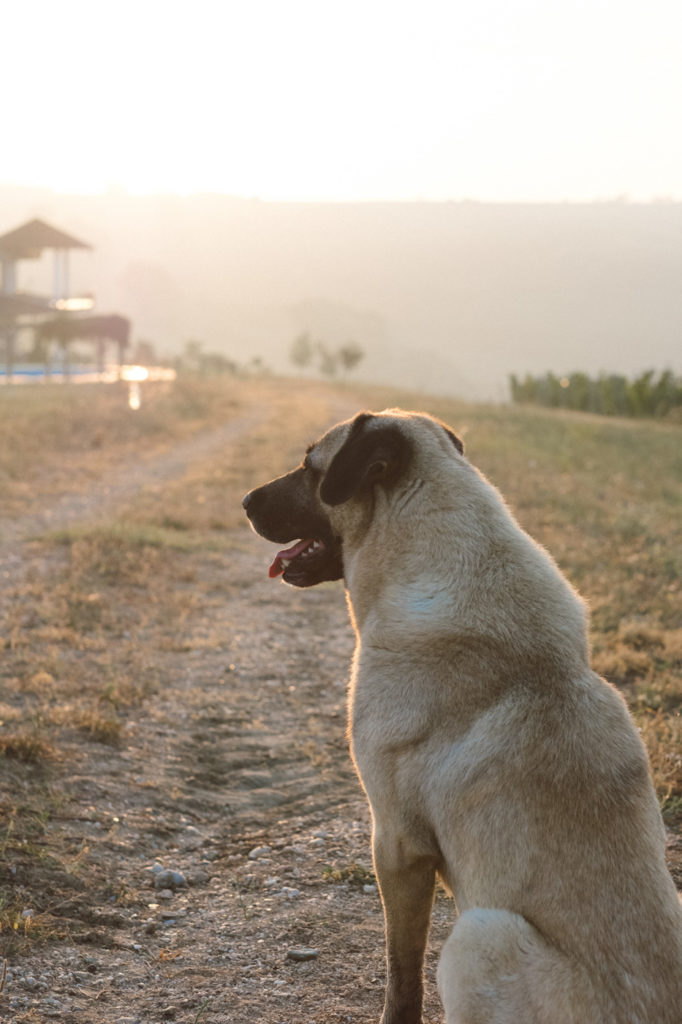
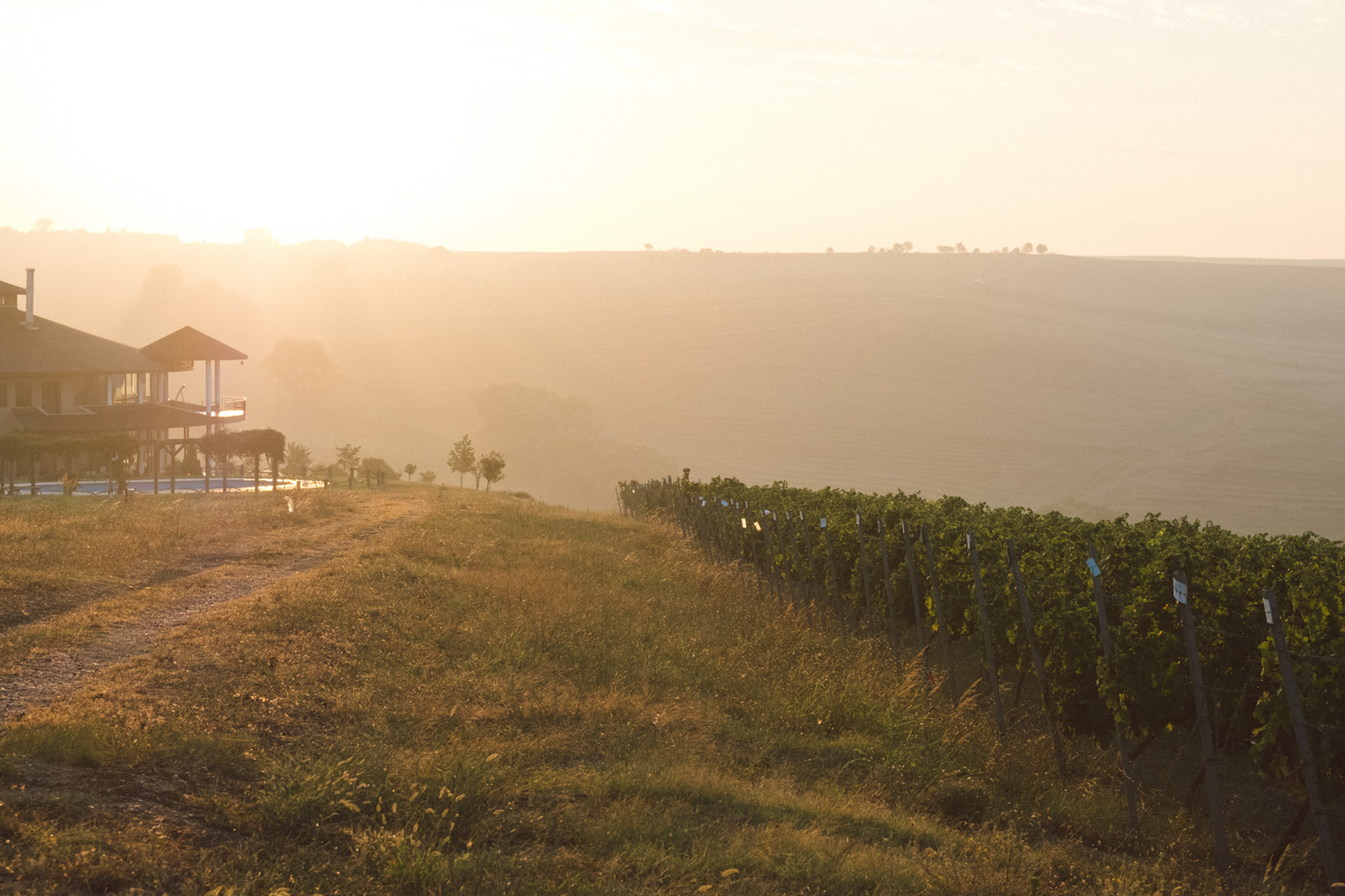
Chateau Nuzun
Driving west from central Istanbul, one can feel that the city never ends. It’s a sea of aging concrete mid-rises with intermittent new developments: sleek towers of steel and glass, mixed residential buildings with luxury condos, and shopping malls.
But like a storm suddenly breaking, the urban sprawl opens up to pristine farmland: fields of sunflowers, grazing cows, olive trees, and grapevines.
My first official stop on the Thrace wine route is Chateau Nuzun. Technically, the route begins in Kirakeli, near the Bulgarian border, and criss-crosses south some 350 kilometers to the Suvla Wine Factory at the southern tip of the Gallipoli peninsula. But driving west from Istanbul, Chateau Nuzun is the closest winery, located in what is nearly the exact middle of the route. From the highway, a small dirt road is marked by a sign with the Turkish spelling: Şato Nuzun.
Chateau Nuzun is a true chateau, with the winery overlooking the gentle slopes of international grapes: cabernet sauvignon, merlot, pinot noir, syrah, and zinfandel. The viticulture at the chateau is certified organic, although the small addition of sulphur at bottling keeps them from being able to sell their wine as organic by Turkish regulations.
It’s only 10:30 a.m., but the sun is already beaming down hot and the air is thick with humidity. The Marmara Sea glitters on the horizon, but offers no breeze to mitigate the July sun. As I walk up to the chateau—a circular, modernist structure—grasshoppers frantically hop around my feet. A petite woman with sun-kissed skin and a warm smile appears in the doorway. “Right this way,” she tells me in Turkish. “Welcome.”

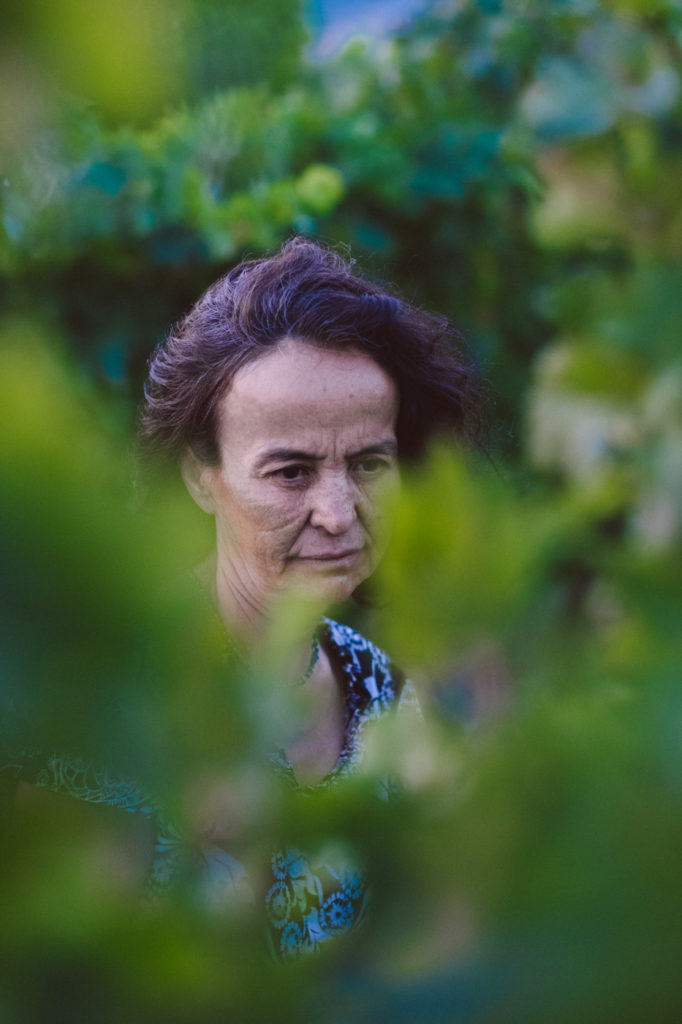
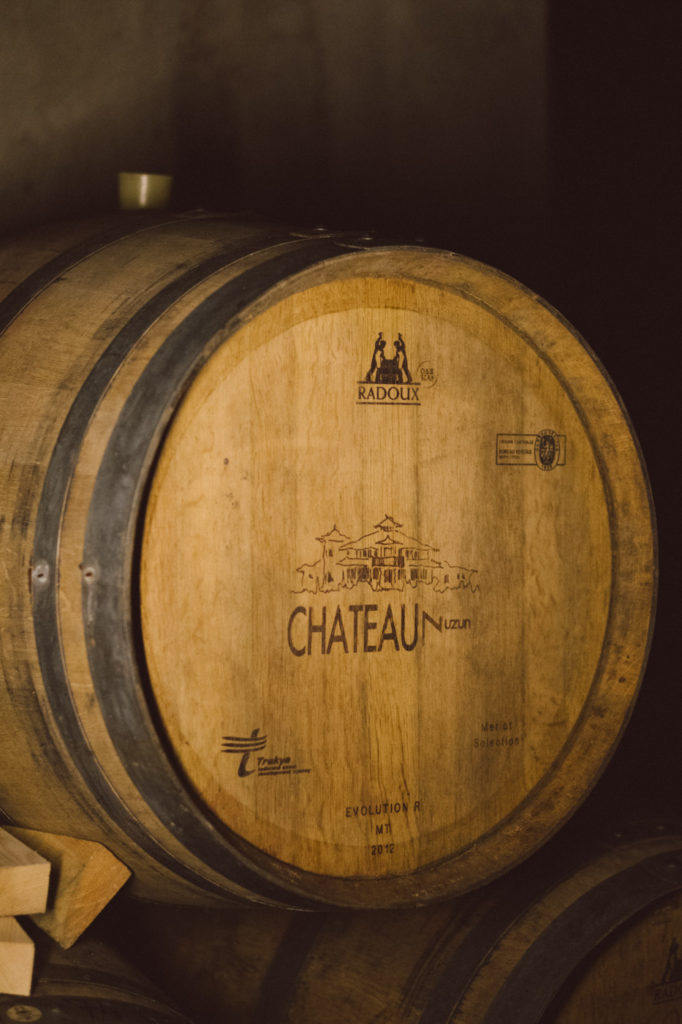
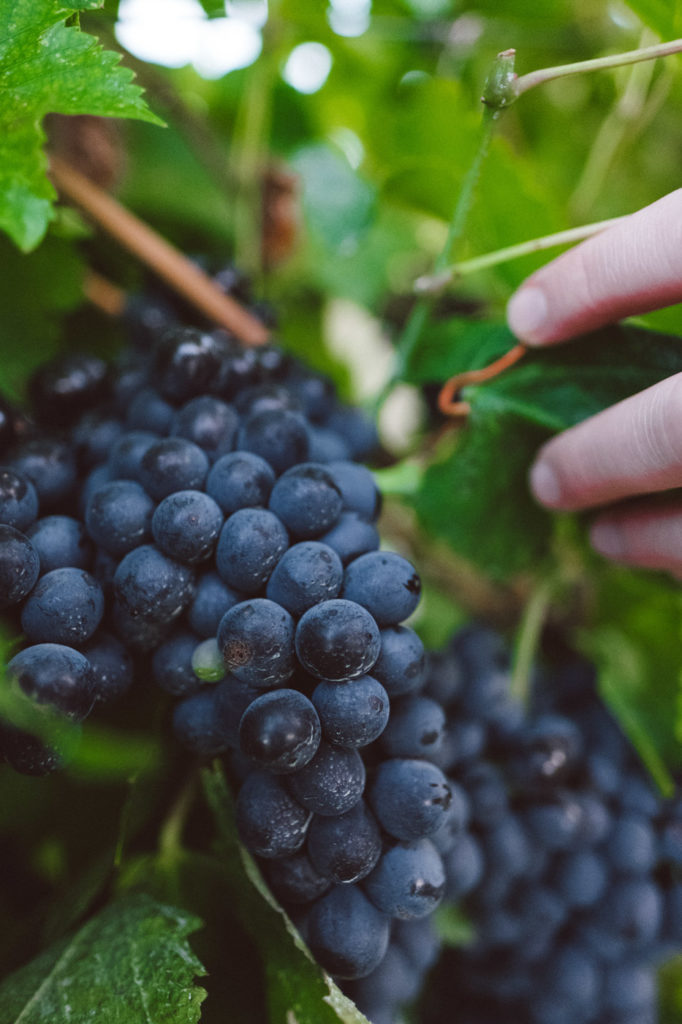

My guide is Nazan Uzun, who founded the winery with her husband, Necdet. Both are retired engineers, a background that shows in the thoughtful details throughout the winery. The fermentation tanks—tall, stainless steel silos—are built below ground, allowing the grapes to be loaded by gravity rather than pump. The wine is aged in French oak in the cellar, deep enough underground to not require temperature control. The Uzuns keep the cellar at a constant eight-five percent humidity to help minimize the evaporation that can take place during aging known as “the angel’s share.”
“We don’t want the angels to have any of our wine,” says Uzun.
The Uzuns once lived in San Francisco, and a Napa Valley influence can be detected in their wines: they are concentrated and structured. But a combination of new and used French oak shows restraint, and in all of their wines I’ve tried, the oak takes a quiet, supporting role to the varietal characteristics. A particularly memorable vintage is their 2009 Chateau Nuzun blend, which saw most of the crop lost in a hail storm. What was spared proved to be exceptional fruit, and despite being one of their oldest vintages, still shows remarkable vitality. I purchase a few bottles before heading north to my next stop.
Chamlija
The street leading to Chamlija’s Büyükkarıştıran store is closed for the Saturday pazar—or farmers market—so I park a few blocks away and stroll through on foot. While “seasonality” and “farm-to-table” have been buzzy terms in the culinary world for some time, small communities in Turkey have never stopped relying on the local landscape to provide their food. Every town, and even most neighborhoods in cities, have a weekly pazar.
Tomatoes are finally in season, and watermelons are at their peak. There’s also local cheese and eggs, some still matted with feathers. The pazar is winding down, and most of the vendors are starting to pack up for the day, but a few hold out for a last sale or two.
The morning’s wine is sitting heavily in my mostly empty stomach, so I pop into a small restaurant. The proprietors—husband, wife and son—sit at an outside table. It’s the hottest part of the day, and the only other people in the restaurant are two old men sipping on strong black tea from traditional tulip-shaped glasses. All eyes are on me as I order sucuk, a spicy, garlic-heavy beef sausage that’s served with grilled peppers and greens, which I wash down with ayran, a salted yoghurt drink with a sour, probiotic bite. President Recep Tayyip Erdoğan famously declared ayran to be Turkey’s national beverage.
The implication that the chosen beverage was non-alcoholic reveals Turkey’s complicated relationship with alcohol. On the one hand, Turkey is a Muslim-majority country with the lowest alcohol consumption per capita in Europe. Those who do imbibe have seen alcohol taxes repeatedly hiked. In 2013, alcohol companies were barred from advertising, including having websites or social media (many on the Thrace Wine Route have sidestepped regulations by having websites for their vineyards or restaurants, which make no mention of alcohol). On the other hand, the ruling AK Party has offered incentives for grape farmers and even funding for marketing campaigns abroad to boast Turkish wine exports. The seemingly paradoxical policies reflect a legacy that goes back to the Ottoman era when wine was an important source of tax revenue, even though Muslim citizens were barred from drinking it.
Under the Ottoman Empire, wine was made primarily by ethnic Greeks, who mostly left in the early twentieth century in a series of forced population exchanges between Turkey and Greece. But many of the Muslim minorities who were forced to relocate from Greece and the Balkans brought the knowledge of viticulture with them, including the ancestors of Mustafa Çamlıca—the founder of Chamlija wines.
With vineyards scattered around the countryside, Chamlija’s winery is located in Büyükkarıştıran, along with a shop that’s an official stop on the route. Mustafa Çamlıca’s wines enjoy a staunch following of mostly younger Turkish oenophiles. The bottles feature playful labels, illustrated by Çamlıca’s daughter Irem, an accomplished artist. The wines, a diverse array of international and indigenous grapes, tend to be young, bright and quaffable.
I try the door, but it’s locked. I pop into the small convenience store next door and grab a soda water. I ask the shopkeeper if he knows when the wine shop will open, and I’m told they will be closed for the day.
The consolation? “I sell all of their wines for the same price,” he says.
With at least a dozen cuvées lining the shelf, the selection is impressive for a small corner store. Chamlija’s puts out a surprising array of grapes: from international varieties like pinot noir and viognier, to indigenous grapes like papaskarası and mavrud. I spot a cuvée I’ve enjoyed before: Kara Sevda.
The cuvée is a whole cluster fermentation of Papaskarası, meaning the stems are allowed to macerate with the grapes, a technique which some winemakers believe adds more aromas and complexity. At 13.5 percent alcohol, it feels lighter than most Turkish wines, and is intensely aromatic. Sipping Kara Sevda, one sees why the Turkish grape is often compared to pinot noir, and indeed the cuvée reminds me of some New World, whole cluster pinot I’ve enjoyed.
The bottle joins my haul from Chateau Nuzun as I hop in the rental and drive to a hotel in Tekirdağ.
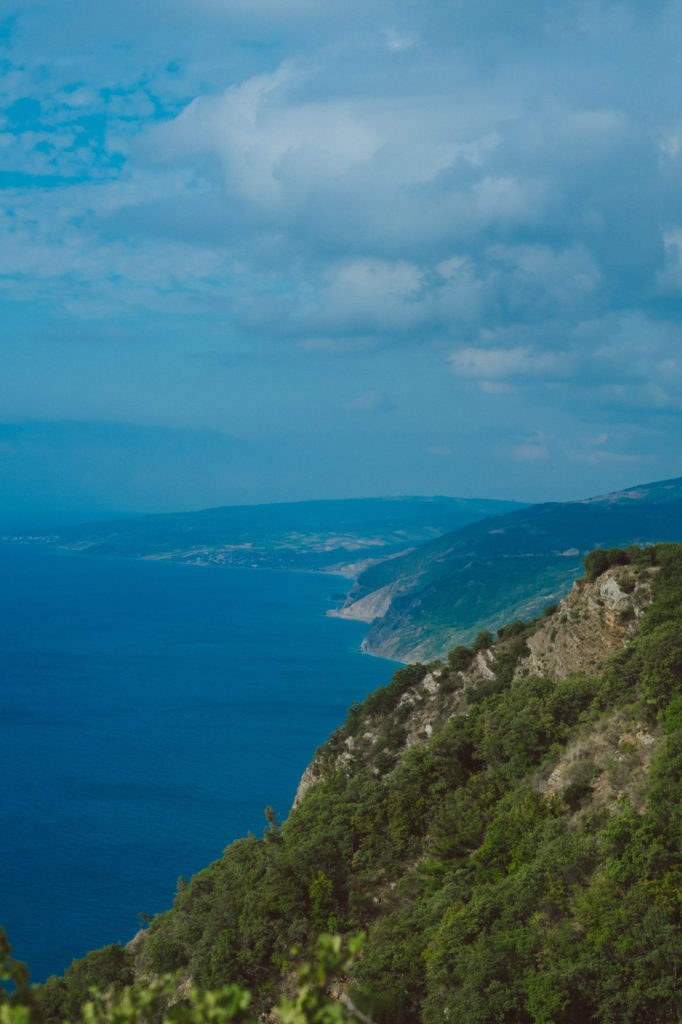
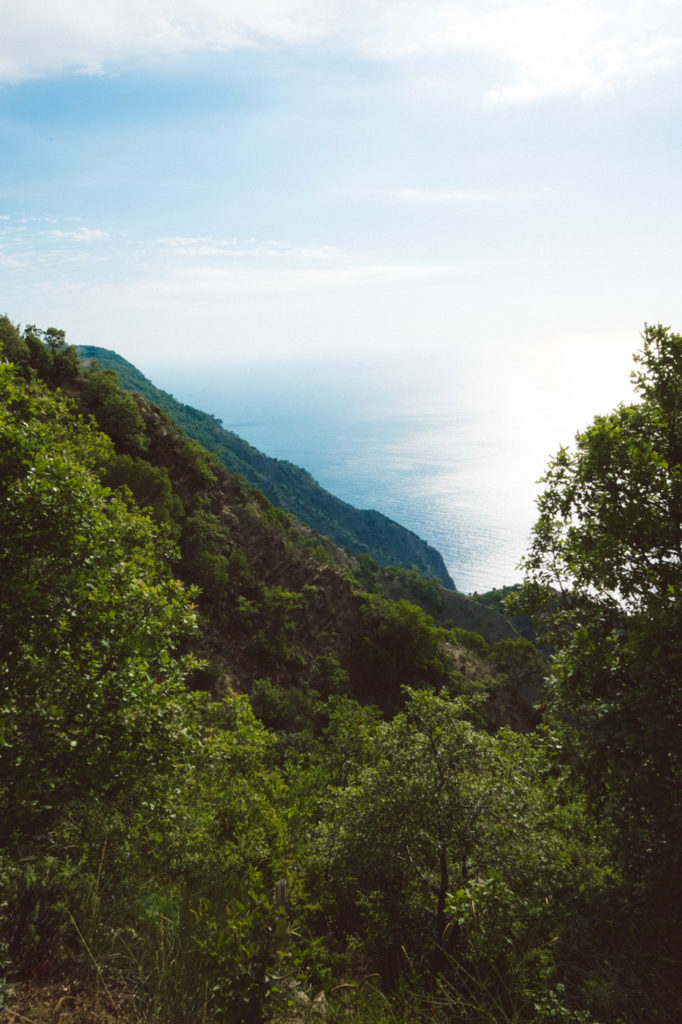
Chateau Kalpak
Tekirdağ is the name of both a city and a mountain range, where dramatic cliffs are responsible for creating many of the region’s microclimates. The road from Tekirdağ to Şarköy follows the Marmara coast. With hair-pin turns and exhilarating views—it’s best to pull over if you actually want to enjoy them—it’s a white knuckle drive that only sometimes has a guard rail. Some of the sheer cliffs are popular destinations for paragliders, whose technicolored sails slowly spiral in the air. On the other side of the mountain are secluded summer houses and nameless rock beaches, where local youth dive from old wooden piers of dubious structural integrity.
For months I’ve asked the proprietors of Istanbul wine shops what their favorite Turkish wine is and the response has been almost unanimous. “Chateau Kalpak, of course!” says Kaan Önal, owner of Vinus Wine and Spirits in Istanbul’s upscale Nişantaşı neighborhood. With a slew of gold medals and ninety-plus ratings, the estate has earned cult cabernet status amongst Turkish oenophiles since unveiling their 2010 vintage to the world in 2014. They remain the only Turkish winery to earn three stars from AWC Vienna, a prestigious international wine competition.
The manicured estate feels like a movie set, the platonic form of a seaside vineyard. At three hundred MASL, Chateau Kalpak offers stunning views of both the Marmara and Aegean Seas. Even without the panorama, the chateau itself is a site to behold. Its elegant, curved roof is reminiscent of the estate’s gentles slopes, or perhaps a sideways wine barrel. Like a Frank Lloyd Wright, it feels like a seamless part of the landscape, as if these well-pruned rows of cabernet and merlot vines were meant to lead to this glass and concrete structure.
When I arrive I learn the winery is closed for tours. Thankfully, the wine shop is still open and I opt for the 2011 Cabernet Franc, if nothing else than to take in this view for a little while longer.
Clocking in at 14.6 percent alcohol, everything about this wine is big: aromas, fruit, body, tannin. On the nose, there’s ripe blackberries, followed by black pepper and winter spices. After some time in the decanter, secondary flavors open up: violets, bell pepper, graphite. It’s a powerful wine with delicate nuances. I can only imagine Robert Parker would approve.
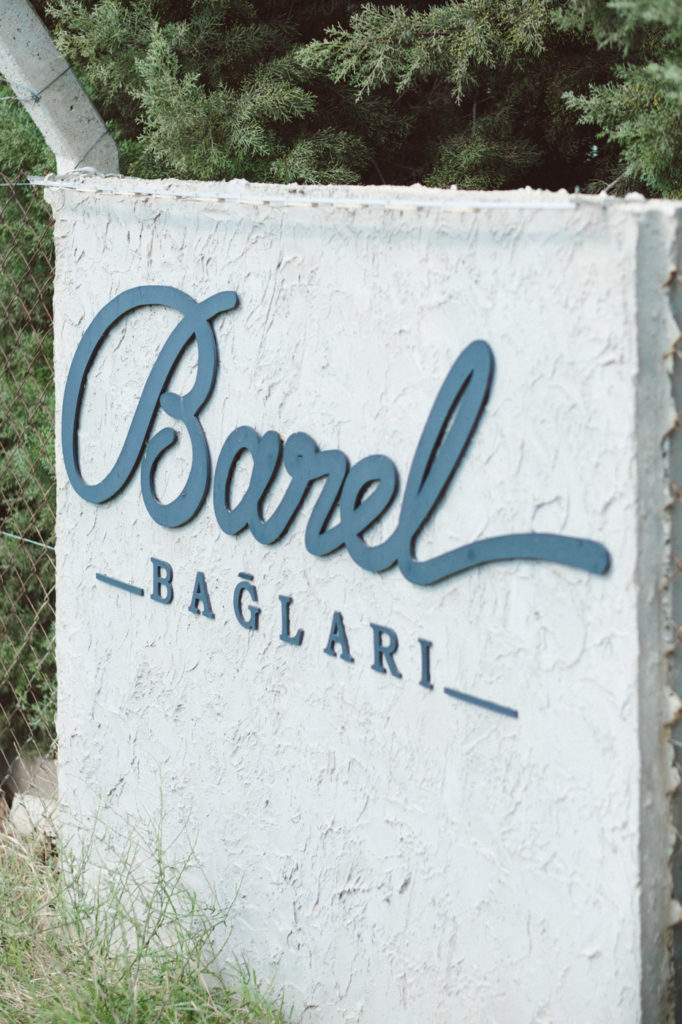
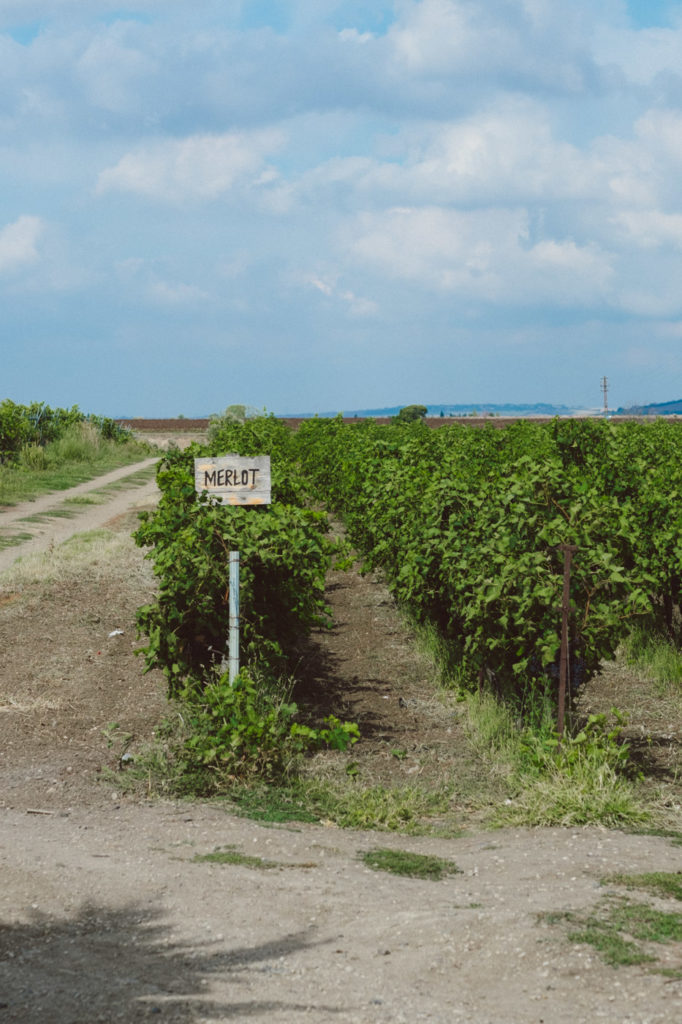
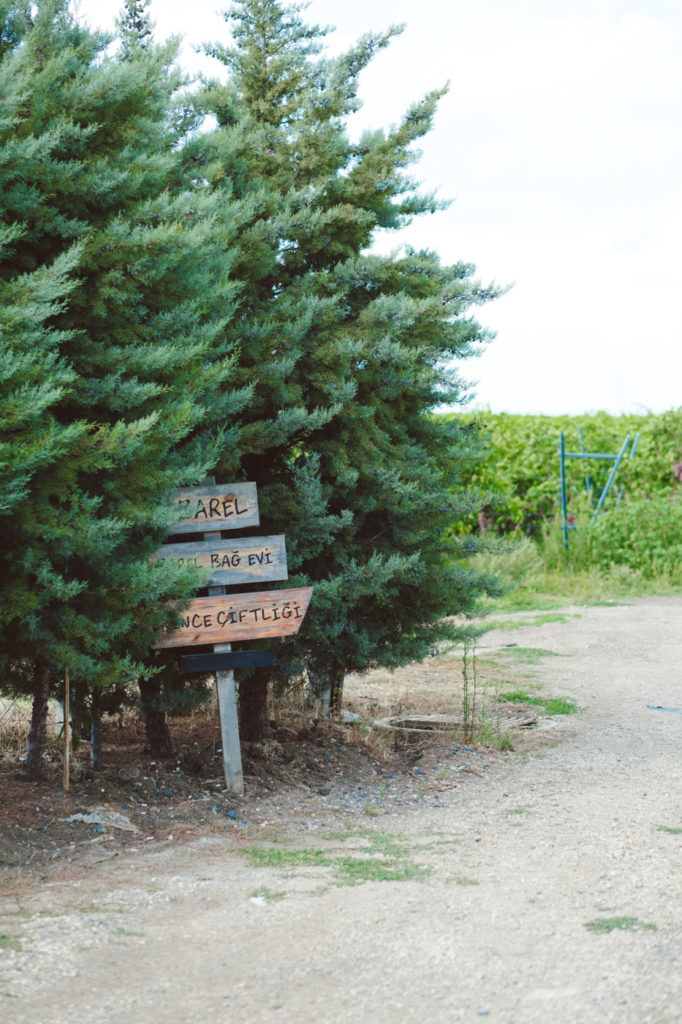
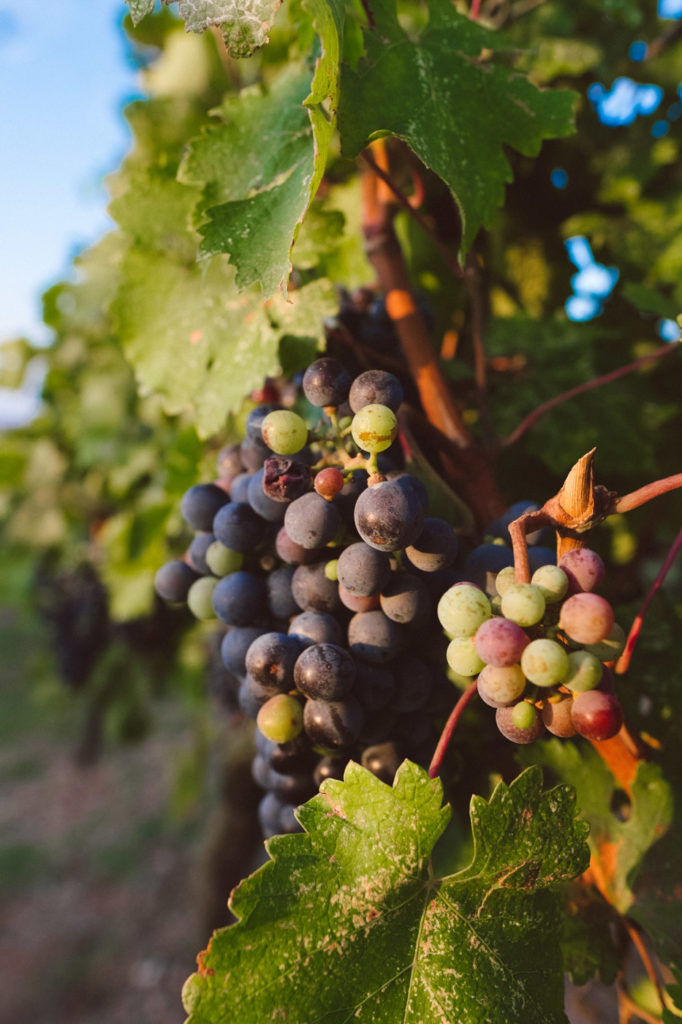
Barel Vineyards
On the last evening on the Thrace Wine Route, I end up near where I started: at Barel Vineyards, just a few kilometers from Chateau Nuzun. Barel has a full restaurant, which allows them to sell wine by the glass, accompanied by a simple but thoughtful menu of Turkish and Italian classics. My wife enjoys a glass of their rosé, and I order their syrah, which pairs beautifully with the lamb, served with a side of pureed squash and carrots, caramelized in cinnamon.
Back in Karagözoğlu’s office, I ask about the future of Turkish wine. “Export. Export,” he says. “In Turkey, with the taxation, with the costs, the way the market is set up—the restrictions—I don’t see huge growth. There will always be people who are willing to try, who will always drink, but I think the future is in export.”
I don’t doubt Karagözoğlu’s expertise, but looking around the garden at Barel, it’s obvious my family and I are the only foreigners here. I see a group of college students who ask the server to take a picture. I see a young couple on a date. I see some fellow parents in the corner, whose kids join ours in running amok around the garden. As a cool evening breeze rustles the vines, the sun sets over an adjacent field of sunflowers and I can’t help but feel the future of Turkish wine is looking bright.





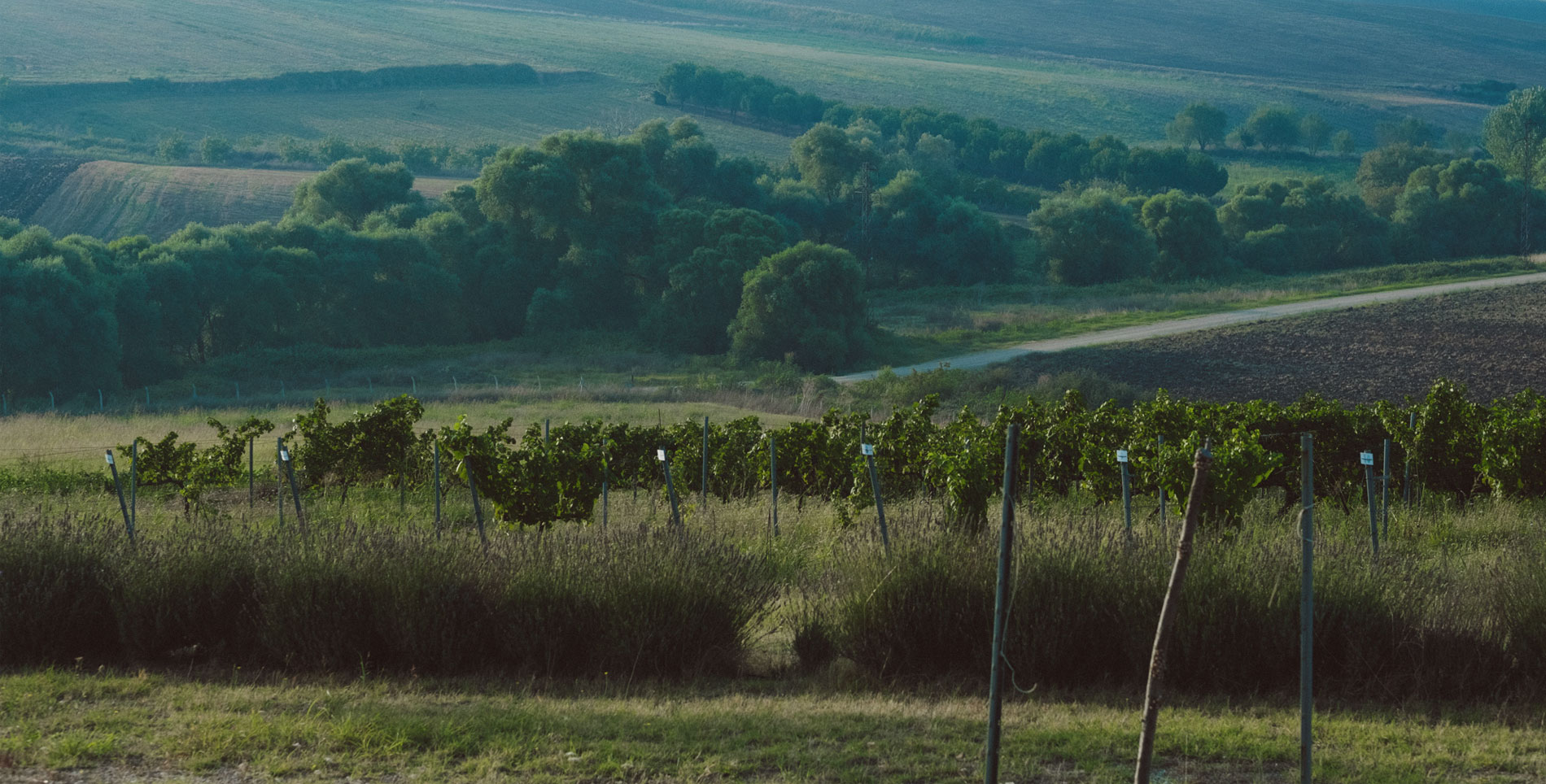

Our comments section is for members only.
Join today to gain exclusive access.